In Stuttgart, CURRENT Reclaims Air as a Mode to Rethink Public Space
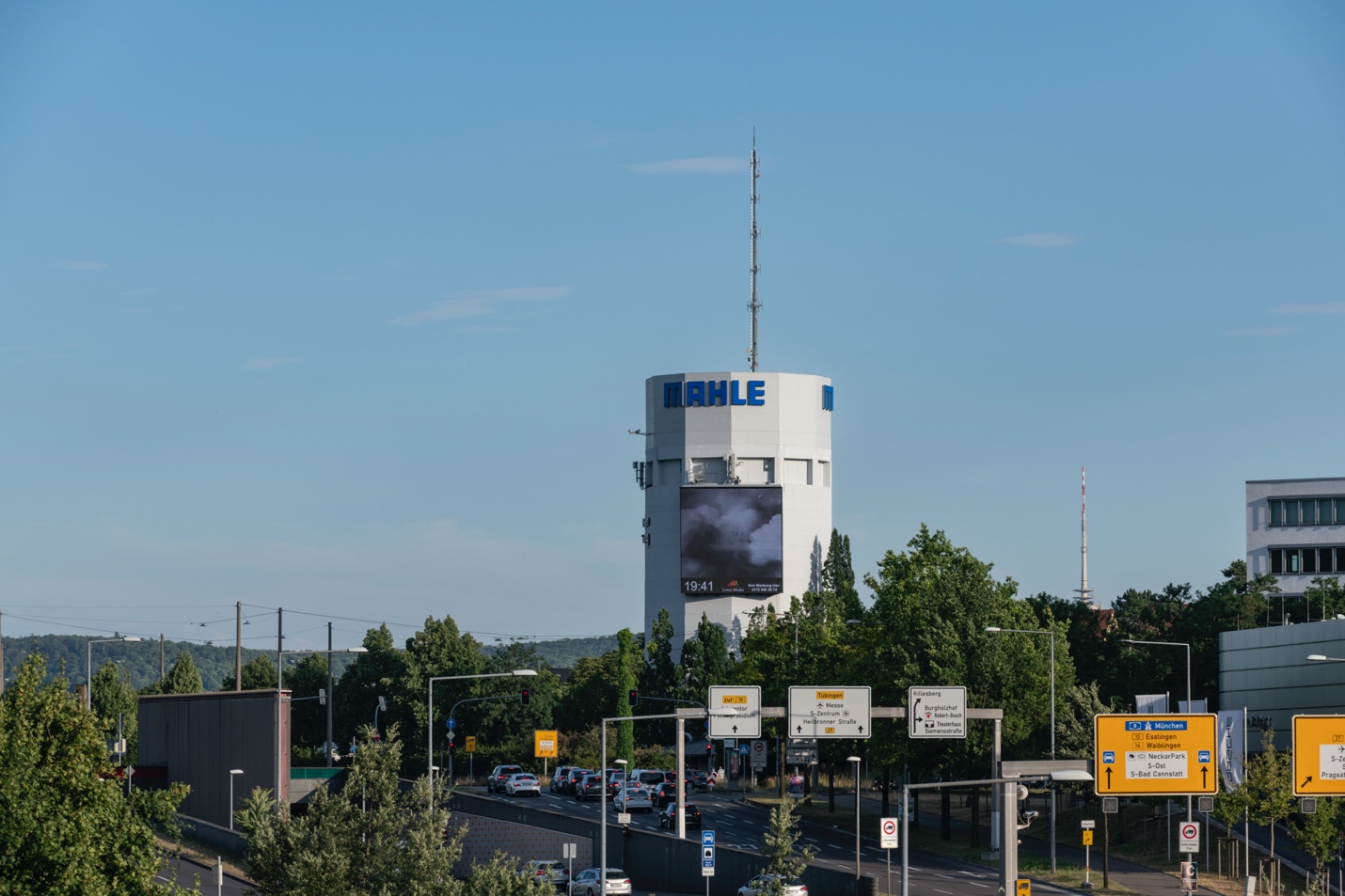
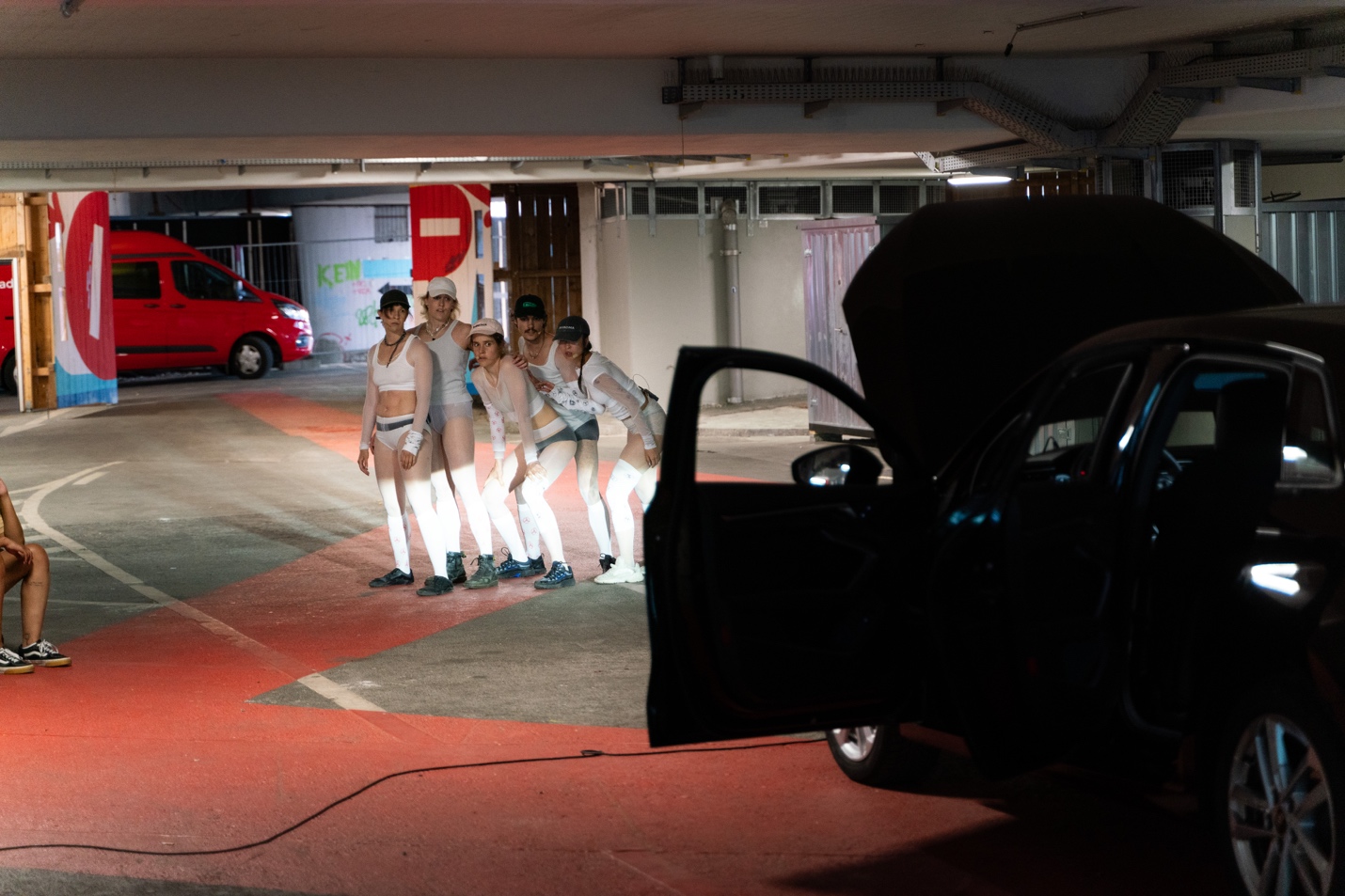
In July, Swedish architect and transdisciplinary researcher Caroline Ektander gave a talk on toxic commons in Stuttgart. She traced the environmental fallout in former East Germany after the fall of the Iron Curtain. Poetically, she unearthed invisible dynamics of pollution, memory, and political neglect. At the same time, British artist Love Ssega shared the story behind LIVE + BREATHE, a clean air movement rooted in South London, which formed after a young girl died from pollution-related causes. Using performance and community sports as activism, they demand clean air as a right—not a privilege. Both were part of a symposium on air as a commons, a fitting theme for the southern German city, which is known for its car manufacturing. An industry that is responsible for significant pollution.
At times subversive, at others haunting, the festival CURRENT – Art in Urban Space reclaims public space through site-specific performances, discursive interventions, and walks and installations. This year’s theme, air, traces the movement of air through the city—not only meteorologically but aesthetically, sonically and socially. In doing so, the festival asks urgent questions: Who owns the air we breathe? How is air shaped, politicized, and weaponized in urban space? Can our breaths be reclaimed?
Three performances explore the nexus of ecology, power, and personal freedom using the car as a vehicle. Jasmin Schädler’s installation Lenkgeschichten: Zwischen Blech und Herz (Steering Stories: Between Metal and Heart) transforms an ordinary sedan into a resonant social space. Wrapped in holographic foil, the car gleams like an apparition. The voices of Stuttgart locals spill out of its open doors, recounting memories tethered to their vehicles. Visitors are invited to sit, listen and reflect on the multifaceted memories and personal stories associated with the personal automobile. The soft shimmer of the car becomes a site for collective dreaming—and mourning. While in the dusky shafts of a downtown parking garage, a non-binary, feminist choir sings against the roar of an idling engine in Natalia Domínguez’s Ralentí: ticking over. Ralenti, the Spanish word for an engine running in neutral, in its entirety stages a critique of masculine iconography within industrial noise. Choir members stretch, dangle, and straddle the body of a black ca physically disrupting traditional hierarchies of power, technology and gender.
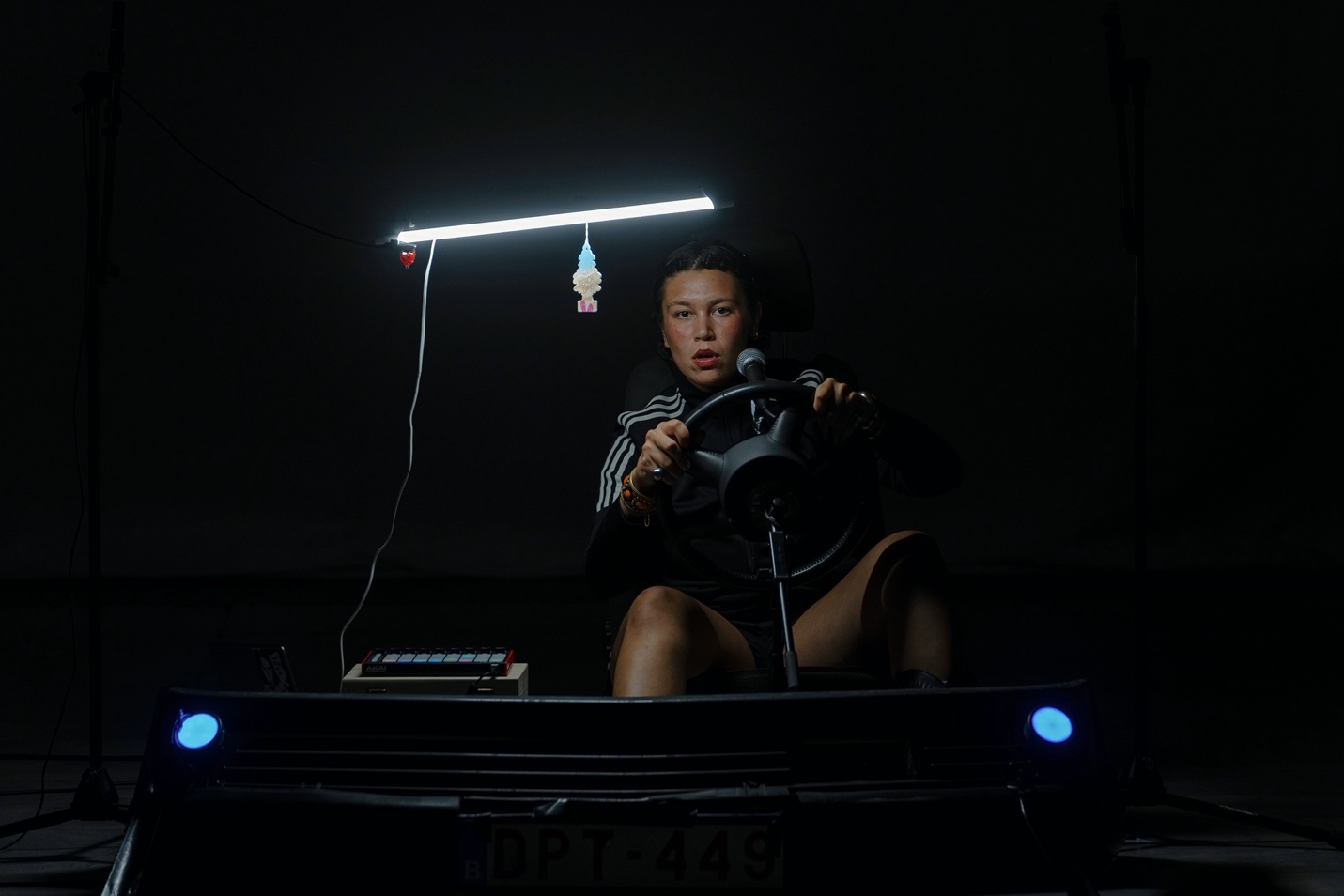
Just a few blocks away, in Autobio, the performance artist Kenza Lansari pulls audiences into a visceral entanglement of body, breath, and machine. Flashing lights and crude soundscapes mirror the chaos of mediated embodiment. The audience is taken from a junkyard for used cars in a Brussels neighborhood, on a road trip through Europe to Tunisia. Combining documentary practice with biographical self-assessment, it asks: what role does one’s own environmental privilege play in the global structure of ecological exploitation?
While artworks punctuate Stuttgart’s public spaces, the festival curators assembled a symposium of voices from art, architecture, academia, and environmental politics to discuss air as a commons—and how art can reclaim city-making. Stagnant air has become a serious problem in the city. Stuttgart’s industry is dominated by automobile and machine manufacturing, home to the giants such as Mercedes, Porsche, and Bosch. Christiane von Raven, a climate engineer consulting the city, who works with grassroots climate initiatives, shared data that showed how the city has experienced a temperature rise of more than one point five degrees Celsius in the past years. Implementing climate expertise and practices of commoning, various local projects were finding local solutions to counter this dire reality. She explained how the greatest hurdle to implementing this climate research in planning practice was the outdated and monolithic bureaucracy of the municipal planning administration.

Elke Krasny, Professor at the Academy of Fine Arts in Vienna, shared her research into critical care, bringing a feminist lens to the conversation, emphasizing transnational memory politics and care infrastructures. Her work also drew connections between environmental justice and urban experience. Discussing the work of Eyal Weizman of Forensic Architecture, she delivered his haunting reflection of wartime destruction and its impact on our air: “The [bomb] clouds are actually everything that the building was. They are composed of brick, plaster, wood, glass, building remains, human remains… all of that becomes this cotton wool that exists in the air for eight to ten minutes.” In The Day the Clouds Vanished, Sofia Dona recalls Stuttgart’s WWII fog machines, once used to cloak the city from Allied air raids. Archival black-and-white fog footage plays on a digital billboard above one of the city’s busiest highways. The clouds—ephemeral, human-made, ominous—hover in stark contrast to the glossy advertisements around them. Both Dona and Weizman’s work evokes both repulsive and unexpected aspects of warfare, raising timeless questions about the cruelty of war.
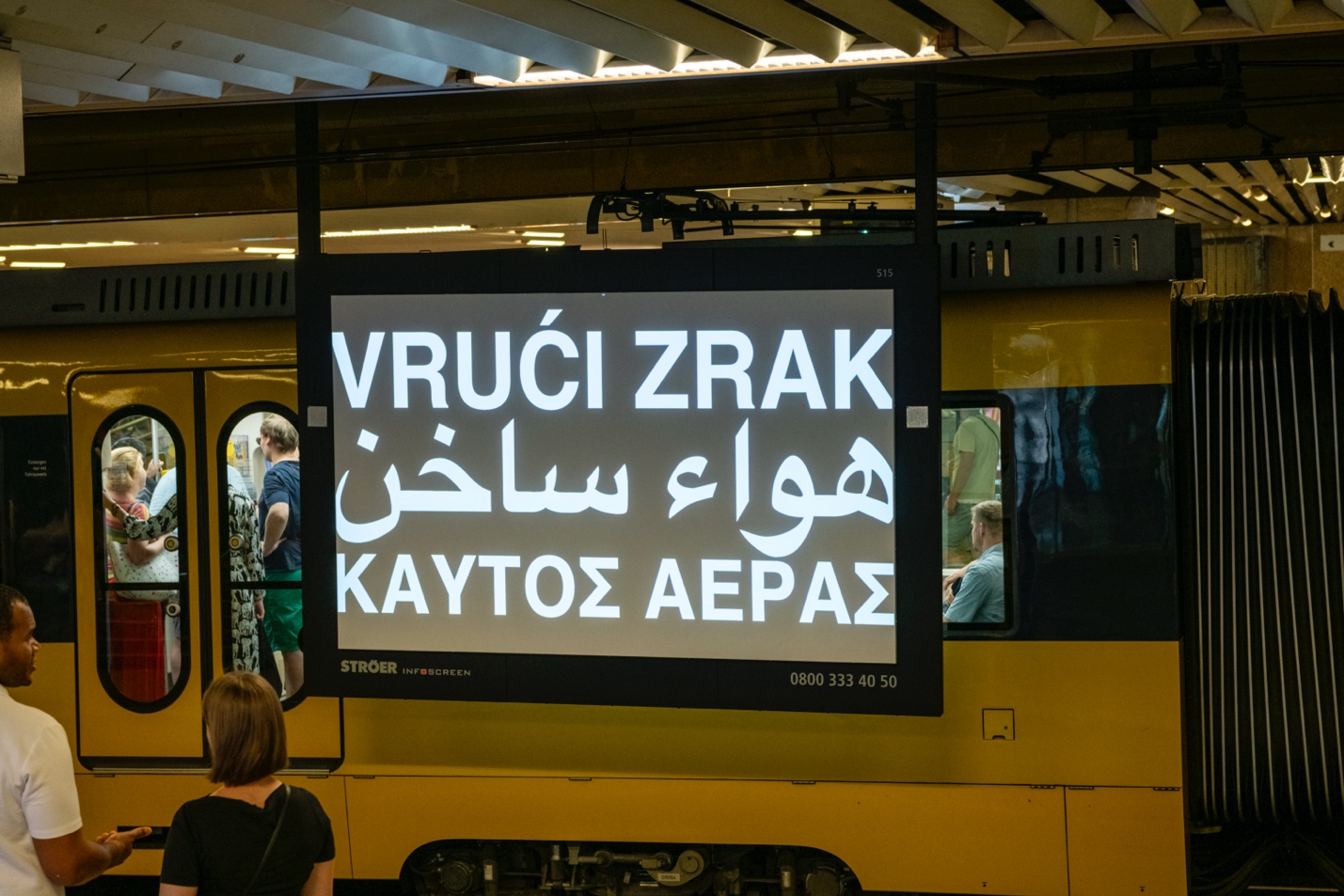
Elsewhere, Anahita Razmi’s city-wide intervention POLYPHONIC HOT AIR hijacks billboards with text-based works that dissect the meaning—and the emptiness—of the phrase “hot air.” Cleverly questioning who controls the messages that fill public space and who decides what is dismissed as “just rhetoric.” While artists Chris Dreyer and Gary Farelly, working as the Office for Joint Administrative Intelligence (O.J.A.I.), reimagine a pedestrian tunnel as a surreal zone of bureaucratic mysticism. Their performance—part ritual, part research—combines cartographic drawings, oracular soundscapes and a distilled fruit liquor sourced from trees along Brussels’ motorway. Here, infrastructure becomes séance.
At Café Weiß, a smoky local pub, artists Johanna Ackva, Cécile Kobel, and Judith Milz host a cigarette break, Smoker Salon, as part of a 4-part act within the work ~4E8A∞~. The overarching title refers to the advised breathing rhythm of four counts of inhaling and eight counts of exhaling. Between karaoke, both trivial and inflammatory topics, and video projections, the artists reflect on breath as a site of capitalist optimization. During the four-hour performance, a drag of smoke becomes a gesture of resistance and disruption throughout as the conversation meanders, revealing how the culture and capital of the Waldorf school are interwoven with the tobacco industry.
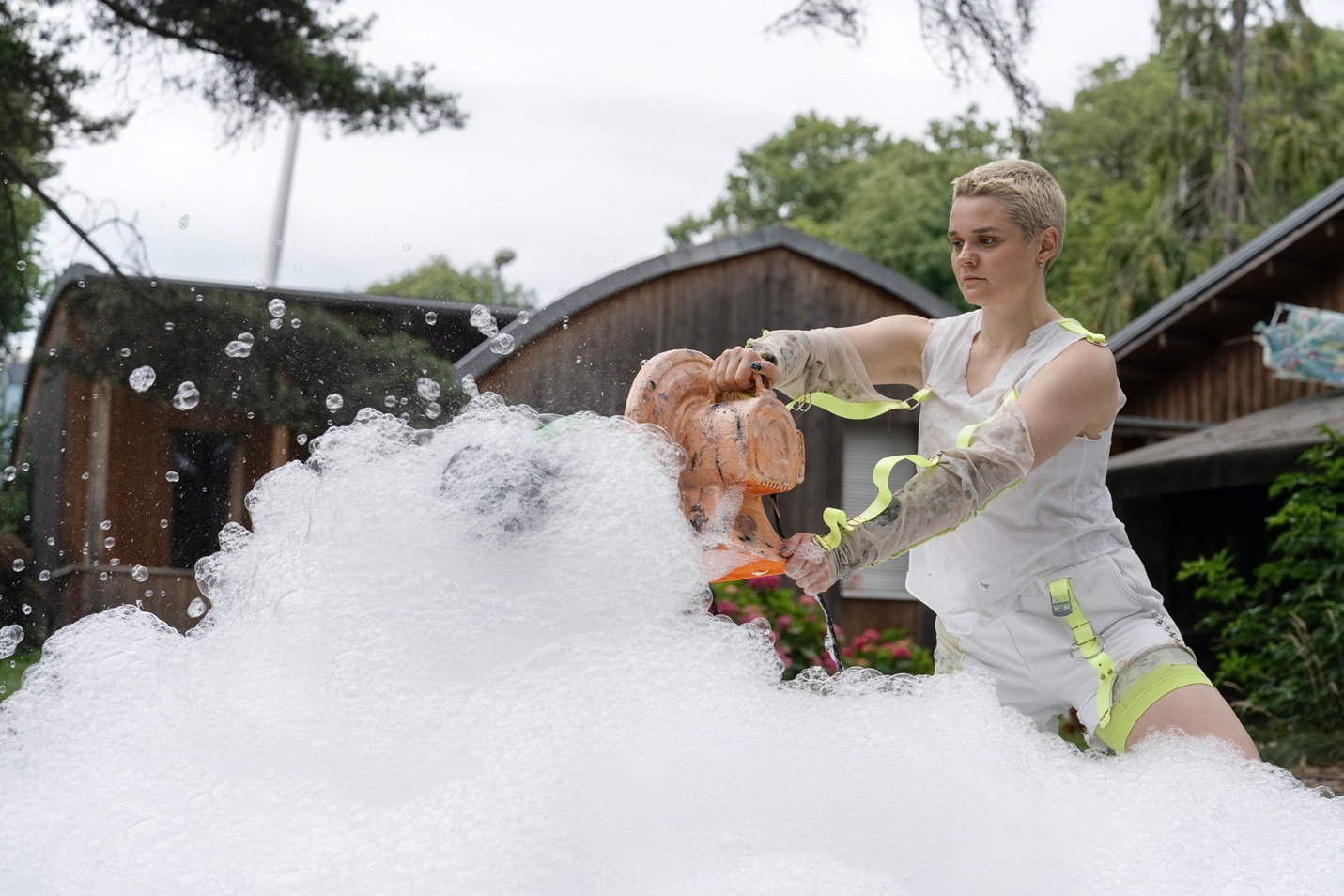
In a quiet clearing just outside of the center, The Symbiotic Approach (Julia Hainz and Carmen Westermeier) invited festival-goers to take an “air bath.” Their installation meditates on breath as communion: each inhale carries more than oxygen, it carries micro-organisms, histories, and shared vulnerabilities. Invisible collectives become cohabitants. This healing experience represents much of what the festival conveys. Although urban spaces around the world are being transformed by privatization, commercialization, gentrification, and war, CURRENT 2025 offers sparks of hope that the air remains ours to claim, whether by collective actions or everyday practices.
You Might Also Like
Coming into Community at the Oslo Architecture Triennale
Idelle Weber and Aurora Robson’s Environmental Works at Hollis Taggart
What's Your Reaction?
Tina Steiger is a translator and interpreter working in cultural production. Based in Berlin, she works primarily with the independent arts around topics of the city, architecture and community development. She collaborates with institutions such as Young Arts Neukölln, E-WERK Luckenwalde and the CURRENT Festival Stuttgart. Originally from the south of Germany, she grew up in Florida and received a Master's degree in Urban Studies from the University of Copenhagen.

